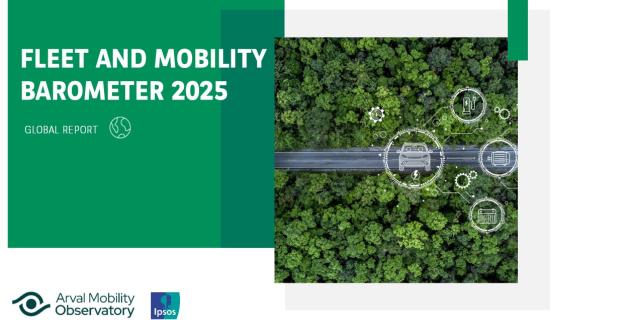Paris, 10th of May 2022
During the last 10 years, the Total Cost of Ownership (TCO) price for a vehicle has followed a constant moderate increase, in line with inflation rates.
The vehicle's TCO is impacted by many factors such as the catalogue net price, the preventive maintenance and mechanical repairs cost, the labour cost, the taxes, the insurance prices, the funding rates and the used car market prices.
Leasing companies continuously mitigate these cost evolutions through, for example, by negotiating cost of funding, agreeing special and preferred deals with manufacturers and suppliers, and sharing best fleet management practice to assist their clients in controlling their fleets TCO.
Recently a number of these factors have been significantly impacted across all markets. The level of uncertainty increasing considerably with the evolution of many of the cost factors not predicted or anticipated. The raw material and semiconductors shortages, the global geopolitical situation that have followed the COVID-19 pandemic are creating new supply chain constraints. This at a time when vehicle manufacturers were faced with changing their business model to react to environmental concerns regarding air quality and global warming.
These challenges significantly and rapidly are affecting the global economy and the automotive landscape.
Will the fleet and vehicle TCO return to the previous levels of stability, or, will it decrease or will it increase? This is a question that many companies are looking for an answer to. To allow them to anticipate as best as they can the actions to be implemented to control their fleet and mobility budget.
This article aims to bring to the readers’ attention the various elements of a vehicle TCO and the factors that affect them. Then to provide some actions that companies can take in order to mitigate these impacts as much as they possibly can.
A VEHICLE’S TOTAL COST OF OWNERSHIP AND ITS IMPACTING FACTORS:
As a reminder, on average, a vehicle’s Total Cost of Ownership is composed as follows: 40% to 60% financing cost, 15% to 30% energy cost (Fuel or Electricity consumption), 10% maintenance, 10% insurance and approximately 5%-10% additional taxes (ownership or usage taxes).

 Vehicles’ net list price, used car market evolution and short term funding rates
Vehicles’ net list price, used car market evolution and short term funding rates
Financing costs make up 40% to 60% of a vehicle’s TCO and some of the elements influencing this cost are the list price of the vehicle, the used car market and funding costs.
A vehicles cost of production is based on a number of factors such as raw material prices and labour costs. Therefore, fluctuation of any of these components affects the vehicle’s retail price. If we consider passenger cars net list price, during the past 10 years, this has increased by 7.000 € on average. In some extreme cases, on certain models we have seen list prices increasing by +45% from 2019 to 2021.
We have seen manufacturers modifying their commercial and production strategy, focusing more on the production of vehicles with high added value such as premium or electrified models. Less volume, far-reaching cost saving policies and production orientated towards most added value products has allowed manufacturers to deliver exceptional financial results in 2021 vs. 2019 (before COVID-19 pandemic). Between 2019 and 2021, the vehicle production and sales volume has decreased by approximatively 20%, while some manufacturers’ profits have increased by 30%.
The used car market conditions influences the residual values set by the lessors, which then affects the financing cost. It is important to note here that for operating lease, a variation in the residual value affects the financing cost 3 times less than the same change in the vehicles net list price. Recently, we have seen the used cars’ prices soaring to levels never experienced before, as vehicle manufacturers have had to cut back production due to factors such as the recent semi-conductor crisis. Used vehicle prices rising because of the very limited availability and the extended delivery times of new vehicles.
Will residual values set today for lease vehicles that will come off contract in three to five years follow the same trend? Nothing is more VUCA (Volatile, Uncertain, Complex and ambiguous).
Last but not least, a factor influencing the financing cost of a vehicle is the funding rate, or the funding cost. The extent of a change in the funding rate on a vehicles’ TCO, is less than that of net list price or residual value variations. When the net list price increases by +10% the TCO increases by 7%. For an interest rate change of the same percentage the change in the TCO is +0.3% (27 times less).
For more than a decade short-term interest rates in Europe have been at a historically low level and their evolution year on year has been stable (never more than +2% and never less than -0.50%). BNP Paribas experts forecast a first hike in the deposit rate of 25 basis points in December 2022; two more hikes of 25 basis points have been forecasted in 2023. But, according to the OECD, the short-term interest rates will continue to be low and stable within the European Union but should increase in the coming two years in the US and Eastern Zone.
Car insurance price
Approximatively 10% of a fleet TCO relates to the insurance premium that is set based on the insurance category of the vehicles on fleet, the average mileage and the fleets claims history. Premiums and the cost of repairs increase on a regular basis (c. +2% per annum for premiums and c. +5% for repairs). The Motor own Damage part of the vehicle insurance premiums are also impacted by the evolution in raw materials, labour and spare parts pricing.
Raw materials and Energy pricing
Raw material market prices are subject to fluctuation based on supply and demand levels and trade volumes. This fluctuation will then directly affect the costs of the vehicle, spare parts, maintenance and mechanical repair costs. Raw material shortages of key components for vehicle production, such as aluminium, copper and steel further affecting the supply chain’s productivity, sending prices upwards. To mitigate that, we have to first understand that raw material prices are influencing many components of a vehicle’s TCO, but with a limited impact.
On the other hand, 15% to 30% of the TCO is defined by energy prices, which are impacted by multiple factors. Firstly, the commodity market and the official announcements of sanctions by one country to another can cause price fluctuations. Lately, we have observed huge variations of the WTI (West Texas Intermediate) and the BRENT (USD/BBL), which have directly affected pump prices. Recently electricity prices have been increasing due to being indexed, among others, to the hydrocarbons (gas and petrol).
Therefore, because of recent conditions, energy costs are reaching historically high levels and strongly affecting the vehicles’ Total Cost of Ownership.
Inflation and Labour costs
Labour costs, impacted by inflation, have remained stable during the last few years. With the present levels of inflation increasing because of the COVID-19 pandemic and other socio-economic challenges, this might change sooner rather than later.
Inflation is the factor that affects all the TCO’s components. Since 2015, the inflation rate was has been stable at a rate of approximatively 2% per year. Since 2020, the inflation rate has been showing a “stronger increase” of approximately 5% in 2021 within Europe. Because of the COVID-19 pandemic and the monetary policies implemented in order to fight the economic impact of it, exchange rates have been increasing and consequently the world has plunged into inflation. For instance, in March 2022, the OECD recorded an inflation rate of 5.1% within Europe and 6.5% across the member countries of G20. Source: Price -Inflation (CPI)- OECD Data
Government’s subsidies, incentives and penalties
In 2022, the Arval Mobility Observatory published a synthesis of changes to statutory taxation and the associated mechanisms evolutions in Europe.
Due to climate emergency, governments around the world issued new incentives such as subsidies, grants, bonuses, taxation schemes and penalty mechanisms, grants and bonuses as well as new taxation schemes to encourage the transition to zero emission vehicles and the installation of electric vehicle charging infrastructure.
At the same time, governments have also introduced specific taxation schemes and penalties for Internal Combustion Engine (ICE) vehicles in order to reduce their market share.
These subsidies initiative have a strong impact on a Vehicle’s TCO making EVs both comparable and often more competitive than ICE vehicles.
Learn more about government’s latest scheme implementation: Tax evolution for 2022 | Arval Mobility Observatory
Conflicts and Geopolitical tensions
The Russian/Ukrainian situation has resulted in the price of natural gas and oil climbing. Electricity prices, which are closely correlated to oil prices, are also increasing. This conflict, which has greatly disturbed the supply chain, has brought into stark focus on Europe’s dependence on a global supply chain. European political and economic leaders addressed the problem by accelerating the transition to a European local supply chain, characterised for example by massive investment in order to build giga-factories for battery production across Europe.
TOOLBOX FOR IMPACT’S MITIGATION:
Considering the above factors that are affecting the global situation, it is easy to recognise that due to the uncertain level of impact on a vehicle’s Total Cost of Ownership’s; an Operating Leasing price forecast is very difficult to do.
Nevertheless, we can try to make some short-term predictions by investigating first the future of the key factors we identified in this article. Concerning the evolution of the mentioned factors and the latest global situation, we can anticipate a significantly higher TCO than what have been previously experienced.
On the other hand, the operational leasing actors as well as mobility managers can take actions in order to reduce the intensity of this price increase. There are a number of actions available to mitigate the anticipated increase in the TCO.
Here is a non-exhaustive list of actions:
- Fleet electrification: Thanks to incentives, subsidies, grants and bonuses, switching your fleet’s ICE vehicles to BEVs will help you mitigate part of the fleet’s TCO increase. In some countries, an electrified vehicle’s TCO can be 20% cheaper than a similar ICE car.
- Connected services: The implementation of telematics services within your fleet provides real time data that can help reduce costs through effective and informed fleet management decisions. Implementing connected services enables you monitor driver behaviour with reductions in accident’s ratio frequency by up to -25% and fuel consumption by up to -15%.
- Fleet management best practices: Optimise fleet costs by ensuring contract terms are in line with your fleet usage; now is a good moment to undertake an exercise to access the significant opportunities represented by under-mileaged cars and vans. Instead of early terminating leasing contracts, reallocate the vehicle against a vehicle nearer to the end of its contract. Finally yet importantly, think about implementing car sharing services and/or alternative mobility services to decrease your fleet and mobility costs.
- Procurement and purchase power: Enter into suppliers’ negotiation in order to beneficiate from volume rebates and better up front discounts. Consider new suppliers within your company fleet policy.
Altogether, these actions can fully offset the expected increase of the vehicle's TCO.










